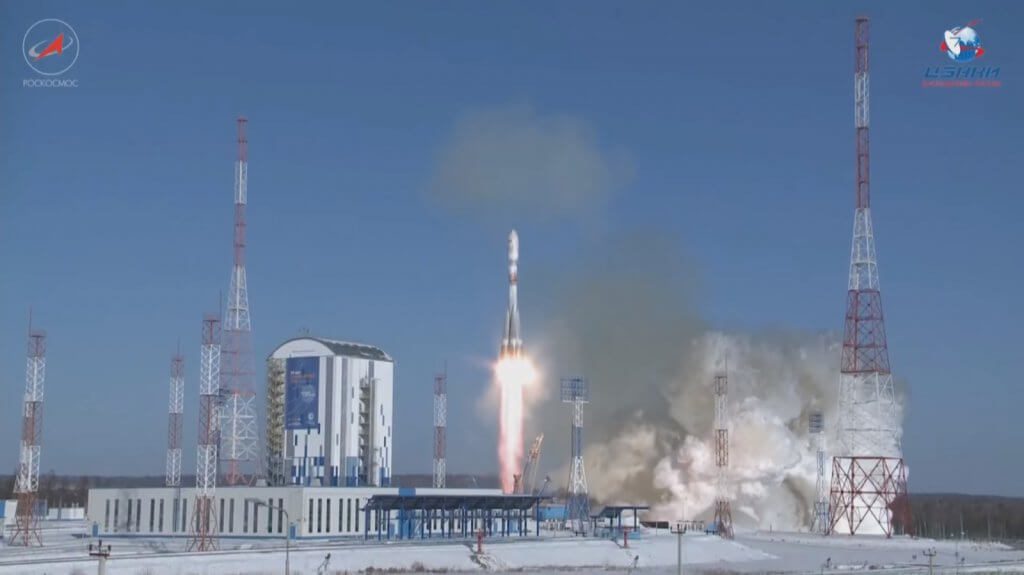The first Russian launch of the year has taken place from the Vostochny Cosmodrome, located in the far East of the country. The launch, which utilised the Soyuz 2-1A variant with an additional Fregat M upper-stage, lifted-off from the Cosmodrome at 0207 GMT on 1 February. It was also only the third launch from the new launch site, and comes after the previous Soyuz flight from Vostochny on 28 November 2017 ended in failure. This was caused by a programming/mission design error which failed to take into account that Vostochny needed different rocket guidance parameters from other Soyuz launch sites, the result being that the Fregat M upper-stage plunged back into the atmosphere along with its satellite payloads.
This error has evidently now been corrected as this Soyuz 2-1A/Fregat M flight successfully carried 11 payloads to low Earth orbit (LEO). The primary payloads were two Russian, civilian, Earth-imaging spacecraft, Kanopus V3 and V4, each weighing around 400 kg and built by JSC VNIIEM. The pair will be operated by the Russian space agency/industrial conglomerate, Roscosmos. They form part of the Kanopus-Vulkan programme which aims to work alongside the higher-resolution Resurs spacecraft to provide disaster monitoring and resource monitoring services.

The first Russian launch of the year lifts-off from Vostochny Cosmodrome. Courtesy of ROSCOSMOS
The remaining payloads were for international customers. Spire Inc, of the USA, has four of its LEMUR-2, 5 kg, 3U-cubesats on-board to bolster its weather monitoring and ship-tracking constellation. Four more payloads were from the Technical University of Berlin (TUBerlin), Germany. These 8 kg S-NET nanosatellites were built by TUBerlin to demonstrate an advanced inter-satellite communications payload.
The remaining payload was another from Germany. D-STAR 1 PHOENIX is a 3U cubesat and identical replica of D-STAR 1 which was lost on the previous Soyuz launch from Vostochny. This payload is built by German Orbital Systems as a technology demonstrator for their planned cubesat communications constellation. In a pre-launch interview a spokesperson for the company said that they had received this launch for free on Roscosmos, likely in recognition of the destruction of their previous satellite.







